Introduction
Volcanoes are awe-inspiring natural phenomena that have fascinated and terrified humans for centuries. These geological features are a result of complex processes deep within the Earth, and when they erupt, they can have profound effects on both the environment and human societies. In this essay, we will explore the causes, effects, and losses associated with volcanoes.
Causes of Volcanoes
a. Plate Tectonics
Volcanoes are primarily caused by the movement of Earth’s tectonic plates. The Earth’s lithosphere is divided into several large plates that float on the semi-fluid asthenosphere beneath them. When these plates interact, they can create volcanic activity.
b. Subduction Zones
One common cause of volcanic eruptions is the subduction of one tectonic plate beneath another. When an oceanic plate sinks into the mantle beneath a continental plate, it can lead to the formation of volcanic arcs, such as the Andes in South America.
c. Hotspots
Some volcanic eruptions occur away from plate boundaries, at locations known as hotspots. These are areas where molten rock, or magma, rises from deep within the Earth’s mantle. Famous examples include the Hawaiian Islands and the Yellowstone supervolcano.
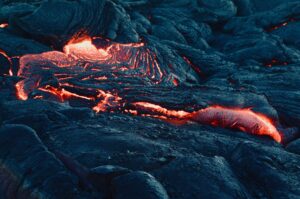
Immediate Effects of Volcanic Eruptions
Ejection of Volcanic Material
When a volcano erupts, it expels various materials, including molten lava, ash, gases, and rocks, into the atmosphere. The composition of these materials depends on the type of volcano, but the ejection of such substances can have immediate consequences.
a. Lava flows:
The flowing lava can engulf and destroy anything in its path. This poses a direct threat to nearby communities and ecosystems.
b. Ash clouds:
Volcanic ash, consisting of tiny rock and glass particles, can be carried by the wind for thousands of kilometers. It can reduce visibility, damage aircraft engines, and create respiratory problems for humans and animals.
c. Pyroclastic flows:
These fast-moving, extremely hot mixtures of gas and volcanic fragments can incinerate everything in their way. They are among the most deadly volcanic phenomena.
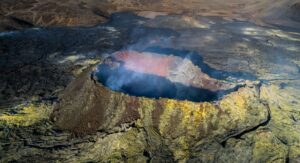
Environmental Effects
a. Climate Impact
Volcanic eruptions can significantly influence the Earth’s climate in the short term. When large volumes of ash and gases are ejected into the stratosphere, they can block sunlight and lead to a cooling effect on the planet. This phenomenon is known as volcanic winter. Historic eruptions like the 1815 eruption of Mount Tambora in Indonesia led to the “Year Without a Summer” in 1816, causing crop failures and food shortages in various parts of the world.
b. Soil Fertility
While volcanic eruptions can devastate the immediate surroundings, the volcanic soilc. that forms from weathered volcanic rock, called volcanic ash soil or andisols, can be incredibly fertile. These soils are rich in minerals and can support lush vegetation. As a result, volcanic regions often become agriculturally productive areas.
c. Biodiversity
Volcanic eruptions can lead to the destruction of habitats and the displacement of wildlife. However, over time, volcanic islands and landscapes can become unique ecological niches, fostering the evolution of new species. Examples include the Galápagos Islands, which played a pivotal role in Charles Darwin’s theory of evolution by natural selection.
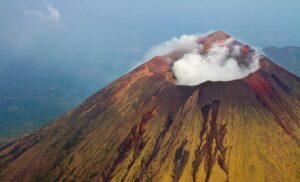
Long-Term Effects
a. Geological Features
Volcanic eruptions contribute to the formation of various geological features, including mountains, calderas, and volcanic islands. For example, the Hawaiian Islands are a chain of volcanic islands formed by the movement of the Pacific Plate over a hotspot, resulting in a series of volcanoes.
b. Human Settlements
Throughout history, humans have settled in volcanic regions due to their fertile soils and the allure of living near these majestic natural wonders. However, this has also exposed communities to the periodic threat of volcanic eruptions. Cities like Naples, Italy, are located near active volcanoes like Mount Vesuvius, making them vulnerable to future eruptions.
c. Geological Hazards
Volcanic regions are prone to various geological hazards, even between eruptions. These hazards include landslides, gas emissions, and the potential for secondary eruptions. Monitoring and understanding these hazards are crucial for the safety of communities living in volcanic areas.
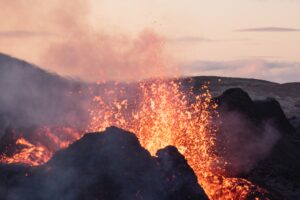
Losses Associated with Volcanoes
a. Loss of Life
Perhaps the most tragic consequence of volcanic eruptions is the loss of human life. Pyroclastic flows, lava flows, and ashfall can cause fatalities, especially in densely populated areas near active volcanoes.
b. Property Damage
Volcanic eruptions can lead to extensive property damage, including the destruction of homes, infrastructure, and agricultural land. Rebuilding after an eruption can be a long and costly process.
c. Economic Impact
The economic impact of volcanic eruptions can be significant, particularly in regions that heavily rely on agriculture or tourism. Crop failures, infrastructure damage, and reduced tourism can all contribute to economic losses.
Top 8 Volcanic Eruptions in the world’s
1. Krakatoa (1883)
Located in Indonesia, Krakatoa’s eruption in 1883 was one of the loudest explosions ever recorded. It generated tsunamis and caused a “Year Without a Summer” due to the vast amounts of ash ejected into the atmosphere, affecting global climate.
2. Mount Tambora (1815)
The eruption of Mount Tambora in Indonesia in 1815 is known as the most powerful eruption in recorded history. The explosion led to the “Year Without a Summer” in 1816, resulting in crop failures and food shortages worldwide.
3. Mount St. Helens (1980)
In 1980, Mount St. Helens in the United States erupted violently, causing widespread devastation in the state of Washington. It was a significant event in modern volcanic monitoring and research.
4. Mount Pinatubo (1991)
The eruption of Mount Pinatubo in the Philippines in 1991 was the second-largest eruption of the 20th century. It had a cooling effect on the Earth’s climate, reducing global temperatures temporarily.
5. Mount Krakatoa (2018)
In recent history, Krakatoa made headlines again with a major eruption in 2018. While not as catastrophic as the 1883 eruption, it highlighted the ongoing activity of this volcanic complex.
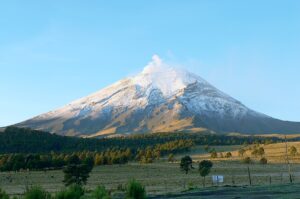
6. Mount Eyjafjallajökull (2010)
This Icelandic volcano erupted in 2010, disrupting air travel across Europe due to the ash plume it produced. It emphasized the interconnectedness of our modern world and the vulnerability of air travel to volcanic eruptions.
7. Mount Fuji (1707-1708)
This Japanese icon erupted in the early 18th century, affecting local communities and leaving a mark on Japanese art and culture.
8. Mount Taal (2020)
The eruption of Mount Taal in the Philippines in 2020 reminded us of the constant threat posed by active volcanoes and the importance of monitoring and preparedness.
9. Mount Laki (1783)
Eruption in Iceland caused crop failures, leading to famine in Europe and Environmental and societal consequences.
10. Mount Pelee (1902)
Devastated the city of Saint-Pierre in Martinique. Nearly 30,000 people perished in the eruption and subsequent pyroclastic flows.
What is the Hurricane: When, Where and Why They Occur
Conclusion
Volcanoes are natural wonders that remind us of the Earth’s dynamic and ever-changing nature. While they have the potential for destruction, they also play a crucial role in shaping our planet’s geology and climate. Understanding the causes, effects, and losses associated with volcanoes is essential for both scientific research and disaster preparedness. As we continue to study and monitor these geological features, we can better protect human lives and property in volcanic regions.



















[…] Key Facts about Volcanic Eruptions – Effects and Causes […]
Hi Neat post There is a problem along with your website in internet explorer would test this IE still is the market chief and a good section of other folks will pass over your magnificent writing due to this problem
I fortunately discovered this brilliant website recently with amazing content for subscribers. The site owner understands how to produce quality material. I’m excited and hope they maintain their excellent efforts.
certainly like your website but you need to take a look at the spelling on quite a few of your posts Many of them are rife with spelling problems and I find it very troublesome to inform the reality nevertheless I will definitely come back again
I do agree with all the ideas you have introduced on your post They are very convincing and will definitely work Still the posts are very short for newbies May just you please prolong them a little from subsequent time Thank you for the post
I do trust all the ideas youve presented in your post They are really convincing and will definitely work Nonetheless the posts are too short for newbies May just you please lengthen them a bit from next time Thank you for the post
Your point of view caught my eye and was very interesting. Thanks. I have a question for you.
I don’t think the title of your article matches the content lol. Just kidding, mainly because I had some doubts after reading the article.